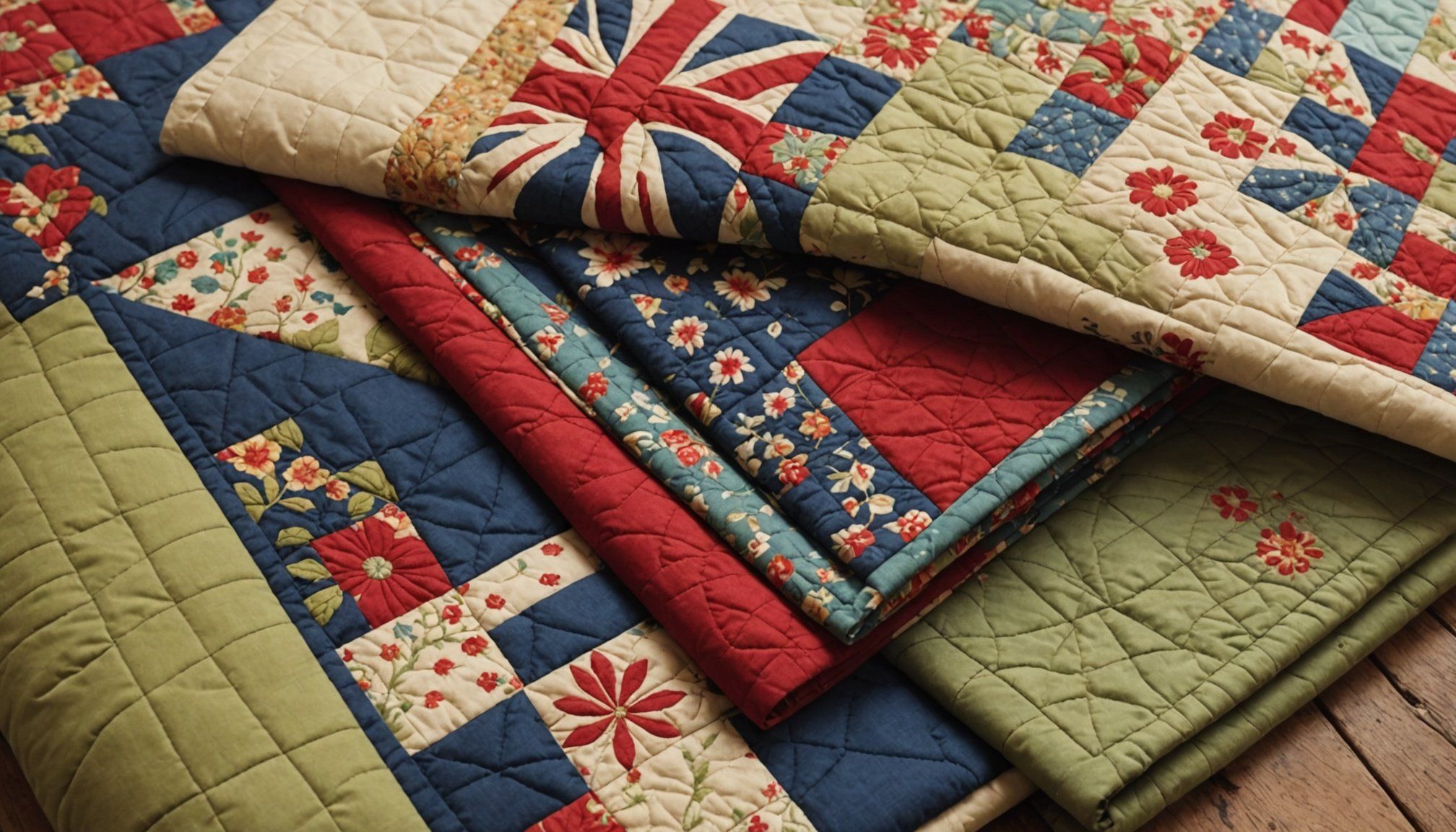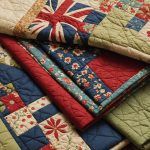Overview of British Quilt-Making
British quilt-making has a rich history intertwined with cultural significance and regional nuances. The quilting history in Britain dates back centuries, evolving through various styles and techniques that reflect the socio-economic climate of different eras. With roots in both domestic necessity and artistic expression, this craft symbolizes the ingenuity and resourcefulness of British communities.
The cultural significance of quilts in Britain can be seen in their diverse regional variations. For instance, Welsh quilts are renowned for their intricate hand-stitched designs that often incorporate local flora and fauna motifs, while Northern England quilts might feature patchwork techniques synonymous with the Industrial Revolution. These regional differences highlight how local traditions and available materials influenced the evolution of quilting.
Topic to read : Discover unbeatable car hire options in st. barts
As time passed, quilting techniques in Britain embraced innovation, incorporating modern methods alongside traditional ones. This evolution introduced machine quilting and quilting as a communal activity, keeping the craft relevant and dynamic. These quilting techniques continue to evolve today, blending past craftsmanship with new technology to create compelling pieces.
British quilts have transitioned from purely functional items to cherished cultural artefacts, echoing a history of resilience and artistic flair. The craft remains a vital part of Britain’s textile heritage, celebrated through exhibitions and continuing the legacy of this quilting history.
Also to read : Discover unbeatable car hire options in st. barts
Key Locations for Quilt-Making in the UK
When exploring quilt-making in the UK, several notable regions stand out. These areas are famous for their rich quilting traditions and community projects. In County Durham, for instance, community quilts tell stories of the Industrial Revolution’s impact. Here, quilts are celebrated as cultural artefacts, cherished both locally and nationally.
Notable Quilt-Making Regions
-
Cornwall offers vibrant quilting tours with a focus on its unique marine-inspired designs. The region’s quilting craftsmanship is often highlighted in local exhibitions.
-
Yorkshire is another prominent location, known for its intricate hand-quilting techniques passed down through generations. The area’s quilts often reflect the rugged beauty of the Yorkshire Dales.
Textile Museums and Exhibitions
The UK boasts several textile museums that preserve and showcase its quilt-making heritage. The Quilt Museum and Gallery in York is a premier destination, offering a deep dive into quilting history through its extensive collections.
Current exhibitions often highlight the evolution of quilt designs, making them a must-see for enthusiasts. By visiting these museums, tourists can gain insightful perspectives on British quilt-making’s enduring legacy and cultural significance.
Techniques and Styles in British Quilting
British quilting encompasses a rich variety of quilting techniques and styles that have evolved over centuries. Traditional styles often draw from regional influences. For example, Welsh quilting is distinguished by its use of dense, intricate patterns, while Durham quilts are known for their wholecloth design—where a single piece of fabric forms the quilt’s top layer, showcasing elaborate stitching.
Modern innovations in British quilting include incorporating machine stitching with traditional hand-quilting. This combination allows for intricate designs to be executed with precision and speed, expanding the possibilities for quilt-makers. Techniques such as free-motion quilting, where the sewing machine’s feed dogs are lowered to enable fluid, unrestricted movement of the fabric, have gained popularity among contemporary artisans.
Fabric selection plays a critical role in quilt-making, impacting both the quilt’s aesthetic and functional quality. British quilt-makers often choose natural fibres, such as cotton and wool, both for their durability and their ability to highlight quilting patterns. The marrying of traditional styles with modern techniques underscores the craft’s evolving nature, safeguarding its legacy while continually pushing the boundaries of artistic expression.
Profiles of Renowned British Quilt-Makers
In the realm of British quilt-making, notable artisans have significantly influenced the craft, infusing it with unique styles and narratives. These quilt-makers have left an indelible mark on the quilting community, celebrated for their distinctive contributions and innovative approaches.
Interviews with Prominent Quilt-Makers
Prominent quilt-makers often draw inspiration from personal experiences and cultural heritage, reflecting these elements in their work. In-depth interviews with these artisans reveal their journeys—starting from early explorations in textile art to achieving recognition for their creative prowess. They frequently discuss the role of storytelling in their crafting process, highlighting how their quilts not only serve as artistic expressions but also as vessels for personal and historical narratives.
Emerging Quilters to Watch
The British quilting scene is ever-evolving, thanks to emerging talents making waves with their fresh perspectives. These upcoming quilt-makers are gaining attention for their bold designs and contemporary interpretations of traditional patterns. By spotlighting their work, enthusiasts can gain insight into the future direction of quilt-making. These artisans are reshaping the craft landscape, bringing dynamic changes that resonate with both seasoned quilters and new audiences alike. Their influence embodies a blend of tradition and modernity, ensuring the continued vibrancy of British quilt artistry.
Participating in Local Quilting Events
Quilting events in the UK offer a unique opportunity for enthusiasts to immerse themselves in the vibrant world of British quilt-making. Annual festivals, such as the “Festival of Quilts” in Birmingham, showcase an exquisite array of quilts from renowned artists and emerging talents alike. These events not only highlight the cultural significance of quilts but also foster a sense of community among quilt-makers and admirers.
Engaging with local quilters during these festivals can enrich your understanding of different regional styles and techniques. For those travelling, it’s beneficial to plan visits around these events to fully experience the rich tapestry of quilting culture. Many festivals offer workshops, giving participants firsthand experience in techniques ranging from traditional to modern.
The benefits of attending such quilting events extend beyond mere appreciation. These gatherings serve as hubs for exchanging ideas, learning new methods, and gaining inspiration from the work of others. Attendees often leave with newfound skills and a deeper connection to the quilting community. Whether you’re a seasoned quilt-maker or a curious novice, participating in these events can enhance your journey into the world of quilting.
Visual Elements and Resources for Tourists
For those wanting to dive deeper into British quilt-making, visual elements and tourism resources are invaluable. Understanding quilting’s artistic dimension can greatly enhance the experience for visitors.
Photography of Iconic Quilts
Capturing the essence of quilt craftsmanship, an assemblage of striking images can illuminate the intricate detailing and rich textures unique to British quilts. These photographs not only showcase the artisanal skill involved but also serve to highlight regional differences in styles and materials. Whether displayed in galleries or online, they allow for a deeper appreciation of quilting’s cultural significance and the stories embedded within each piece.
Maps and Guides for Quilting Tours
For tourists keen to explore quilt-making locations, thoughtfully designed maps and guides provide invaluable direction. These resources chart paths through notable quilt-making regions, guiding visitors on enriching quilting tours. Recommended itineraries often include stops at local workshops, museums, and exhibitions, offering an immersive experience in both historic and contemporary quilting practices.
Online and Offline Resources
To further engage with British quilt-making, travellers can explore suggested books and websites. These provide comprehensive insights into the craft’s history and evolution. Additionally, local quilting guilds and associations serve as pivotal resources, fostering community connections and offering ongoing educational opportunities.











